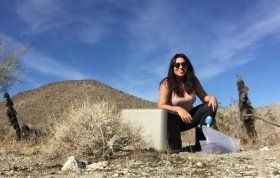
A previously unrecognized source of nitrogen oxide is contributing up to about 40 percent of the NOx emissions in California, according to a study led by the University of California, Davis. The study traces the emissions to fertilized soils in the Central Valley region.
>> Read the Full Article

Most mammals are on the move every day searching for food, finding a mate or seeking shelter. But mammals in human-modified landscapes move much shorter distances on average than in more natural areas – a finding that could have far-reaching consequences for ecosystems and society, according to a new international study co-authored by University of Guelph biologists.
Prof. John Fryxell, chair of U of G’s Department of Integrative Biology, and post-doctoral researcher Tal Avgar helped lead a global research project whose findings were published recently in Science.
>> Read the Full Article

 ENN
Environmental News Network -- Know Your Environment
ENN
Environmental News Network -- Know Your Environment